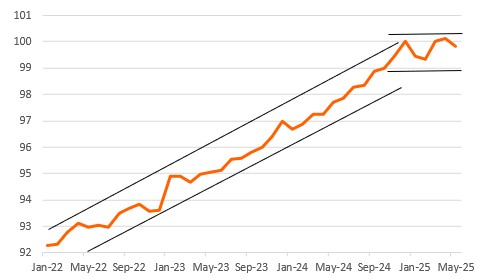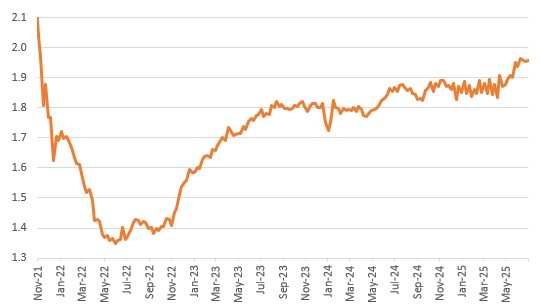Firmer and subdued numbers suggest the will keep rates on hold for now as officials assess the impact of tariffs on
June Retail Sales Gains Amidst Consumer Caution
The US data is generally on the firmer side in terms of activity and jobs, while import prices are a touch softer than anticipated. Overall, it supports the view that there is little pressing need for another interest rate cut from the Federal Reserve.
rose 0.6% month-on-month in June versus expectations of a 0.1% gain. We tend to focus more on the ’control group’, which strips out volatile components such as autos, building materials, gasoline and eating out as this tends to better align with broader consumer spending trends (including services) and therefore gives us a better guide to consumption within .
That rose 0.5% MoM versus 0.3% expected, but May’s growth rate was revised down to 0.2% from 0.4%, leaving us broadly in line with expectations in dollar spending level terms. We need to remember that retail sales is a nominal dollar growth rate, so in real, inflation-adjusted terms, as GDP is measured, we need to knock off around 0.2 percentage points from the growth rate given what happened in the report.
The details show strong nominal dollar auto sales growth of 1.2%, which contradicts the fall in volume numbers released by the automakers (15.34m units in June versus 15.65m in May) and the supposed fall in prices reported within the CPI report (-0.3%). Building materials also rose sharply, which is perhaps pre-emptive buying ahead of tariffs, particularly with in the news. Meanwhile, ’miscellaneous’ jumped 1.8%. Non-store retailers (internet) saw modest sales of only 0.4%.
Retail sales account for around 42% of total consumer spending and as the chart below shows, the trend in 2025 has been a noticeable flat lining after strong post-pandemic gains. Consumer sentiment has softened significantly this year as households worry about the impact of tariff-induced price hikes hurting spending power, a cooling jobs market and major swings in household wealth.
US Real Consumer Spending Levels (Dec 2024 = 100)

Source: Macrobond, ING
Jobless Claims Still Hint at a Softening Jobs Market
Jobless claims dipped a little further to 221k from 228k. The improvement here may be tied to the timing and scale of auto retooling shutdowns, which can prompt volatility over summer months, given the cooling in hiring surveys and warnings of rising lay-offs in manufacturing.
So the risk is that this moves higher once again over late summer. rose to 1956k from a downwardly revised 1954k (initially reported as 1965k). The upward trend in continuing claims reinforces concerns about the cooling labor market and the challenges of finding new work if you lose your current job.
Continuing Jobless Claims Highlight the Cooler Jobs Market (Millions)

Source: Macrobond, ING
Import Prices Suggest Tentative Willingness of Foreigners to Lower Prices in Response to Tariffs
As for the June figure came in at +0.1% versus +0.3% expected, but May’s figure was revised down to -0.4% from 0.0%. This is important as it perhaps suggests some willingness from foreign manufacturers to absorb part of the impact from tariffs via lower pricing. However, these are pretty small moves set against substantial tariff hikes and suggest that American businesses and households will bear the brunt.
Disclaimer: This publication has been prepared by ING solely for information purposes irrespective of a particular user’s means, financial situation or investment objectives. The information does not constitute investment recommendation, and nor is it investment, legal or tax advice or an offer or solicitation to purchase or sell any financial instrument. Read more
